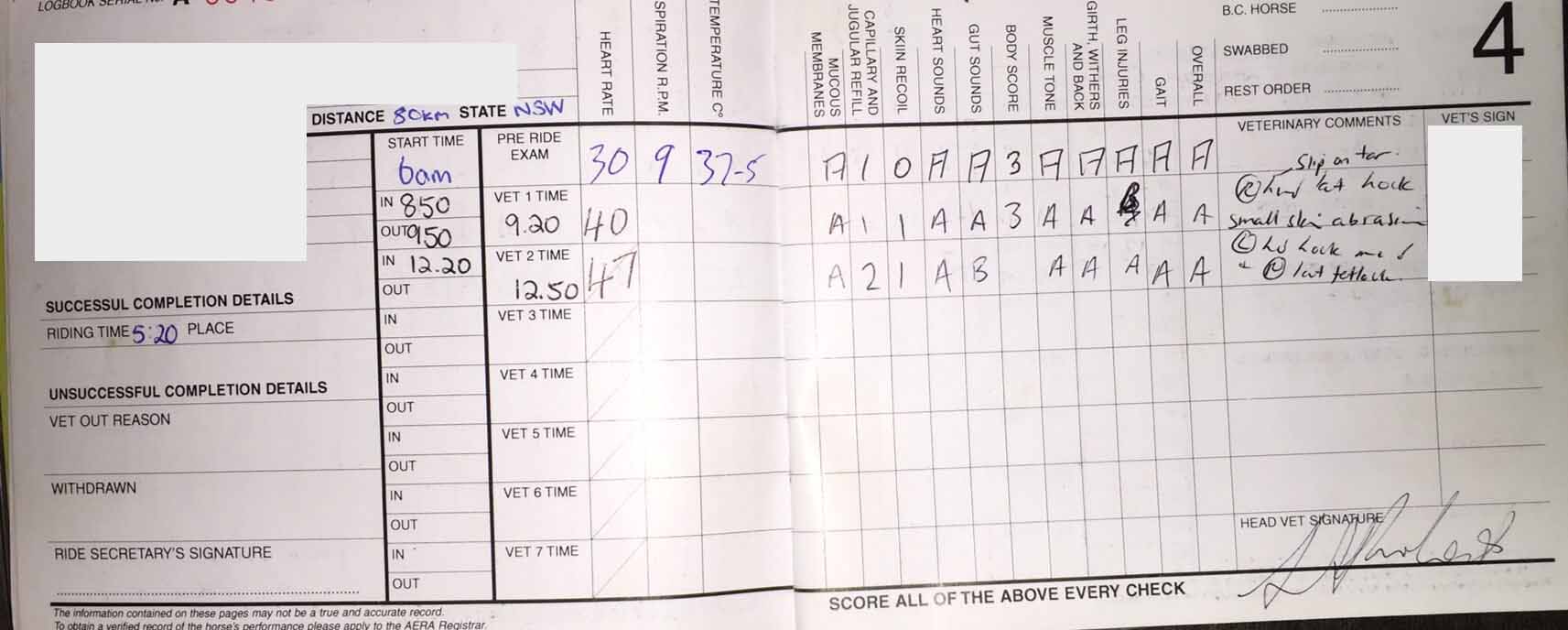Guide to Australian Endurance Vetting
The Final Steps
Overall
- A = No issues – OK
- B = Minor Issues – be aware
- C = Major Issues – caution
- D = Eliminated
Veterinary Comments
This section is used to notate comments such as ‘FTC’ [Fit to continue] or ‘V/O ‘reason’ [Vetted out – HR (heart rate)]. It should also be used to notate any unusual or worrying aspects of the inspection parameters including gait.


Re-Present (Re-examination)
- At any time during the ride a veterinarian may request a re-examination of the horse, within 15 minutes of their departure time for the next loop
- This examination is usually called due to a concern in the parameters observed at the veterinary inspection (often metabolic parameters)
- Compulsory re-examination is usually required on the 3rd or 4th leg of a 120km or 160km ride
- The re-examination is a complete re-examination of the horse including, pulse, metabolic parameters, girth, back and legs and gait
Logbook Examples

NB: Zero is not a score for skin recoil, the score should be 1,2,3 or 4

Vet-Gate-Into-Hold
- Vet-gate-into-hold is a slightly different veterinary procedure, generally used at championship rides, or FEI rides
- Riding time doesn’t stop off each loop (except finish) until the horse has presented to the vet ring and passes the heart rate parameter
- The heart rate must be below 60 (except if in conjunction with FEI ride and the head vet opts for 64BPM) and the CRI parameter is used
- CRI (Cardiac Recovery Index) provides an extra parameter to assess a horses recovery and metabolic status
- The first heart rate is taken immediately when the horse presents and if under 60 the horse is allowed to trot
- The veterinarian restarts the stopwatch and the handler trots the horse 40 metres out and 40 metres back for the gait assessment
- 60 seconds after the horse began to trot, the second heart rate is taken and is compared to the first
Tips
- Prepare, prepare, prepare
- Be organised
- Pack wet weather gear
- Keep well hydrated and fed and events can go into the wee small hours
Conclusion
- Prepare, prepare, prepare
- Be organised
- Pack wet weather gear
- Keep well hydrated and fed and events can go into the wee small hours

